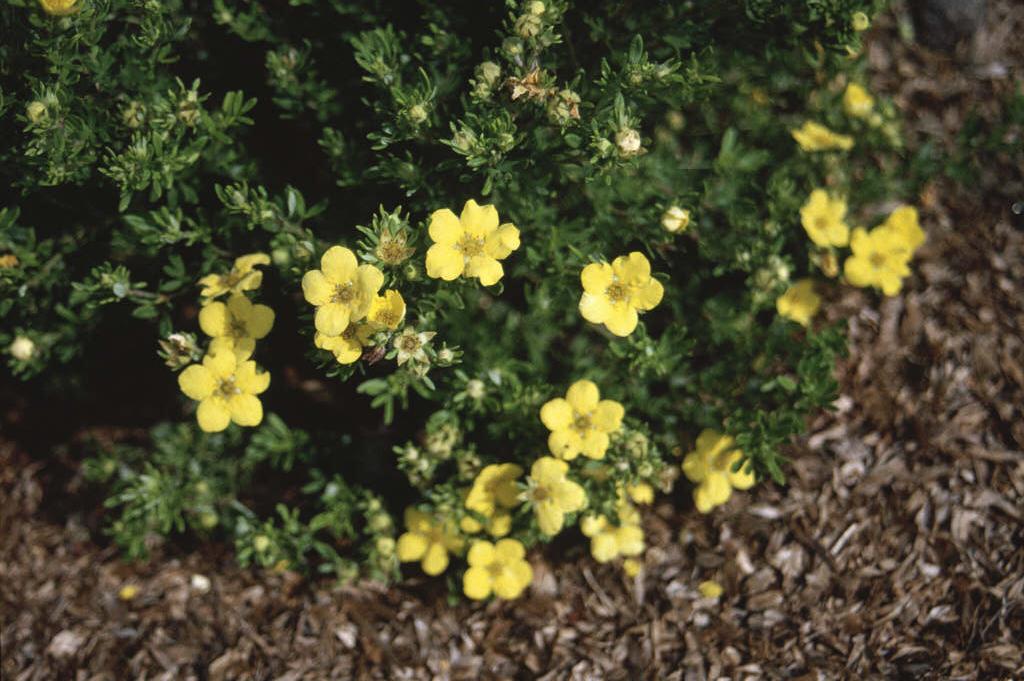Size
Ultimate height
0.5–1 metresTime to ultimate height
5–10 yearsUltimate spread
0.5–1 metresGrowing conditions
Moisture
Moist but well–drained, Well–drainedpH
Acid, Alkaline, NeutralColour & scent
| Stem | Flower | Foliage | Fruit | |
| Spring | Yellow | Green | ||
|---|---|---|---|---|
| Summer | Yellow | Green | ||
| Autumn | Yellow | Green | ||
| Winter |
Position
- Full sun
- Partial shade
Aspect
South–facing or North–facing or West–facing or East–facing
Exposure
Exposed or Sheltered Hardiness
H6Botanical details
- Family
- Rosaceae
- Native to GB / Ireland
- No
- Foliage
- Deciduous
- Habit
- Bushy
- Potentially harmful
- Fruit are ornamental - not to be eaten. Wear gloves and other protective equipment when handling. Pets: Fruit are ornamental - not to be eaten - see the HTA guide to potentially harmful plants for further information and useful contact numbers
- Genus
Potentilla can be herbaceous perennials, deciduous shrubs, or annuals, with palmately or pinnately divided leaves and solitary or clustered, saucer-shaped, 5-petalled flowers appearing over a long period
- Name status
Unresolved
How to grow
Cultivation
Grow potentillas in a moderately fertile, well-drained soil in full sun or part shade
Propagation
Propagate by seed in autumn or spring; don't expect cultivars to come true from seed. Propagate by greenwood to semi-ripe cuttings from late spring to late summer, or by hardwood cuttings in winter
Suggested planting locations and garden types
- City and courtyard gardens
- Cottage and informal garden
- Gravel garden
- Coastal
- Patio and container plants
- Rock garden
- Wildlife gardens
- Flower borders and beds
Pruning
Pruning group 10 after flowering
Pests
Generally pest-free
Diseases
May be susceptible to honey fungus
Get involved
The RHS is the UK’s gardening charity, helping people and plants to grow - nurturing a healthier, happier world, one person and one plant at a time.
